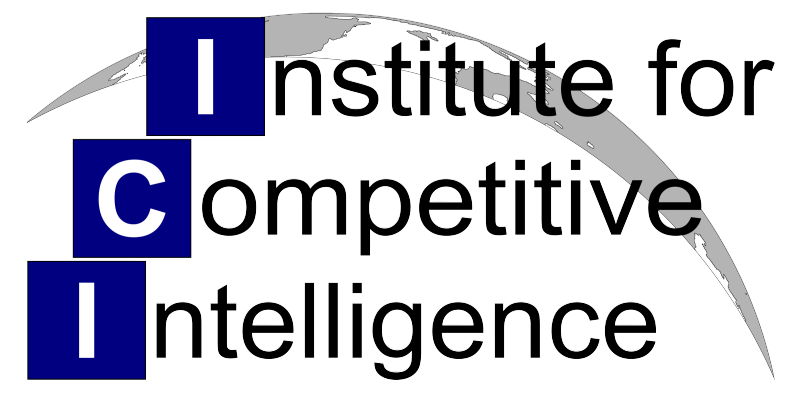Leveraging AI in Strategic Foresight for Business Success

By Thorsten Bill
What is strategic foresight and how can it help my company succeed?
There is a saying: “Failing to plan is planning to fail.” Strategic foresight is all about long-term planning and preparing for different future scenarios.
Here are the top 5 benefits of using strategic foresight:
- Navigating Uncertainty: CI/MI professionals operate in dynamic environments where change frequently occurs. Strategic foresight helps them anticipate shifts, disruptions, and emerging trends. By exploring multiple plausible futures, they can make informed decisions even when traditional risk analysis and forecasting fall short.
- Holistic Perspective: Foresight encourages a broader view beyond short-term goals. It considers macro forces shaping society, technological advancements, and geopolitical shifts. This holistic perspective ensures that strategies align with long-term goals and adapt to changing landscapes.
- Innovation and Adaptation: Strategic foresight fosters creativity and innovation. CI/MI teams can identify new opportunities, potential threats, and white spaces in the market.
- Challenging Assumptions: Foresight prompts critical thinking. CI/MI professionals question implicit biases, challenge assumptions, and explore alternative narratives. This self-reflection enhances the quality of decision-making.
- Structured Approach: Scenario planning is a structured approach that ensures we can evaluate both the likelihood and plausibility of a scenario, based on the causal relationships of influencing factors.
- Strategic Agility: In a rapidly changing landscape, agility is essential. Strategic foresight equips CI/MI professionals with the ability to pivot swiftly, adjust tactics, and seize emerging opportunities.
How complex is it to perform strategic forecasting with scenario planning?
While strategic forecasting and scenario planning can indeed be complex, there are ways to simplify the process and adapt it to different requirements [5]. Here are a few strategies:
- Focus on Key Factors: Instead of trying to consider all possible variables, focus on the key factors that have the most impact on your business or industry. This can significantly reduce the complexity of the task.
- Use Tools: There are numerous tools and software available that can automate parts of the process, such as data collection and analysis. This can save time and reduce the complexity of the task.
- Leverage Expertise: Utilize the expertise within your organization. Different team members may have insights into different aspects of the business or industry, which can be invaluable in scenario planning.
- Iterative Approach: Start with a simple model and gradually add complexity as needed. This allows you to adapt the process to your specific requirements and makes the task more manageable. [4]
Remember, the goal of strategic forecasting and scenario planning is not to predict the future with perfect accuracy, but to prepare for a range of possible futures. Even a simplified approach can provide valuable insights and help your organization be more resilient and adaptable.
Can AI speed up the process?
While the existence of a scenario mapping AI may still be in the realm of science fiction [1], AI can already assist with many individual steps. For instance, during the research phase, tools such as Claude or MS Copilot can aid in searching for common influencing factors and identifying causal relationships [2]. For example they are capable of finding, summarizing, and explaining academic articles for evaluation. Additionally, they can facilitate the creative exploration of scenarios based on selected influencing factors. Moreover, there are excellent AI tools available that can swiftly help you narrate the story and visually represent scenarios by creating and editing images and video.
You might consider asking ChatGPT to create a scenario as an alternative [3]. While this approach could still be classified as scenario analysis, it’s important to note that the scenarios generated may be heavily biased by prevalent business narratives or scenarios present in the training data.
The primary limitation of this approach is the absence of a structured method to assess both the likelihood and plausibility of the generated scenarios.
In our workshop “Strategic Foresight Through Scenario Mapping”, you will acquire knowledge about different structured analysis techniques to formulate scenarios, including clear measures for assessing the likelihood and plausibility of scenarios. This ensures that you realize all the benefits listed above.
Related articles:
- Brandtner, P., & Mates, M. (2021). Artificial Intelligence in Strategic Foresight – Current Practices and Future Application Potentials.
Proceedings of the 2021 12th International Conference on E-business, Management and Economics (ICEME '21). https://doi.org/10.1145/3481127.34811772 - Ködding, P., Ellermann, K., Koldewey, C., & Dumitrescu, R. (2023)1. Scenario-based foresight in the age of digitalization and artificial intelligence – Identification and analysis of existing use cases.
Procedia CIRP, 119, 740-745. https://doi.org/10.1016/j.procir.2023.01.015 - Spaniol, M. J., & Rowland, N. J. (2023). AI-assisted scenario generation for strategic planning. Futures & Foresight Science. https://doi.org/10.1002/ffo2.148
- Monteiro, B., & Dal Borgo, R. (n.d.). Supporting decision making with strategic foresight: An emerging framework for proactive and prospective governments. OECD Working Papers on Public Governance No. 63. https://dx.doi.org/10.1787/1d78c791-en
- Mietzner, D., & Reger, G. (2004). Scenario Approaches – History, Differences, Advantages and Disadvantages. In EU-US Seminar: New Technology Foresight, Forecasting & Assessment Methods (pp. 47-62). Seville, 13-14 May 2004. University of Applied Sciences Brandenburg and University of Potsdam.
Related Events:
Want to stay informed?


